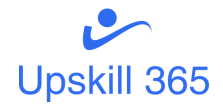Mobile Application Development
Due to the increase in usage of mobile phones, the requirements for mobile application development is growing exponentially. So will be beneficial to learn mobile application development technologies. The technology is simple and once you gain basic understanding on mobile technologies and with some practice anyone can start designing and developing mobile applications.
The course will provide you basic understanding on mobile application development and hands on practice so you can build your own mobile apps.
Types of mobile applications
Native applications – Native applications are built specifically for each mobile platform and installed on the device itself.
Web applications- mobile web application is accessed through the device’s web browser. These apps are platform independent.
Hybrid Applications – is a web application wrapped in a native Framework. They look and feel like a native app, but they are powered by the website. Example Facebook app
Platform details for mobile app development- Mobile applications are developed specifically for the mobile device that they will run on.
- Apple products like iPhone use the iOS platform. For such devices, mobile applications are developed using programming languages like C/C++ and Swift and would require Xcode as integrated development environment (IDE).
- Android phones like Samsung, LG etc are built on Android platform and Android apps are developed using Java programming language. The IDE would be Android software development kit or Android Studio.
- Windows phone 7 – Application is built on universal windows platform using programming languages like Java ,C , C++, C#, Python
A systematic approach will help you to build a successful mobile application
- Identify the features of the App
- Identify the target users , the mobile platform and devices – iOS, Android or Windows
- Identify the type of App – Native, Web or Hybrid
- Design the UI and develop the app using the appropriate programming language and IDE
There are six types of Mobile architectures that you will learn on this course
Thick Client – Both application and application data reside on the device. Example downloadable applications on to the device
Thin Client – Both application and application data reside on the device. Example web based applications
Rich Client – Application resides on device and data is sourced from online sources
Streaming Client – Application and data are streamed from centralized server
Messaging Client – Messages are delivered anytime on the device. Example email, sms
No client – RFID, Voice or DTMF provide the inputs
The typical roles include Mobile Application developer, Mobile application designer, and Technical lead.
Course Certifications
- Kony Development Certification
